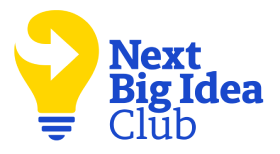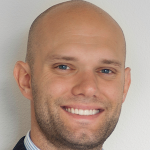Below, Ranjay Gulati shares five key insights from his new book, How to Be Bold: The Surprising Science of Everyday Courage.
Ranjay is a professor of Business Administration at Harvard Business School. He is a leading expert on purpose-driven leadership and helps organizations unlock growth and meaning.
What’s the big idea?
Courage is essential in the uncertain world we live in. It allows us to expand our horizons, grow in unexpected ways, and reach our fullest potential by taking bold action. How to Be Bold provides a roadmap for understanding what courage really is, explains why it’s important in our personal and professional lives, and offers a set of practical tools for becoming more courageous.
1. Courage is a choice, not an innate trait.
One day, back when I was a teenager, my mother and I received a visitor at home. The man introduced himself as a representative of a real estate development company intent on buying some land my mother had purchased years before. The company had approached her repeatedly in the past and, each time, she had refused to sell. This time, the man began by pleading with her and offering a blank check. When she refused, he became adamant that his boss had insisted he must close this deal. When that didn’t work, he pulled back his blazer, and there was a gun tucked in his waist belt. While I was frozen in place, pondering what to do next, my mom immediately stood up, walked up to the man, and slapped him hard across the face. He was stunned, and so was I. She then ordered him out of the house, and we never saw the developer again.
After he left, I immediately asked her if she was scared of the gun. To my surprise, she replied that yes, she had seen his gun and yes, she was afraid. But she said, “I will not let my fear define me. No one was going to come to my house and bully me into selling land I have worked hard to buy.” Her behavior was courage—taking action in the face of fear.
Courage is a choice. My mother had made a choice to face her fear and not cave into it. For a long time, I assumed she and others like her were innately courageous, while I was not. I saw these few individuals as among the chosen ones—made of steel, like the ancient samurai or modern-day test pilots. When it came to myself, I took solace in the fact that humans are wired not for courage but for cowardice. Evolutionarily, fortune favored those who hunkered down rather than those who exposed themselves to danger.
But I soon realized that opting for cowardice, while safe, is not a wise choice: it locks us into complacency and keeps us from leading a full life. Courage doesn’t come naturally, but it is necessary for thriving. Courage leads us to empowerment.
The first step toward courage is becoming acquainted with the discomfort of fear. Our bodies and minds yell “run!” or “hide”—but what if we made the conscious choice to lean into the fear, stay with it for a moment, understand it, and move through it?
2. Courage starts with the stories we tell.
Imagine dedicating your life to opposing a brutal authoritarian government and advocating for a just and open society. You narrowly survive an assassination attempt. You and your family escape to safety in a different country. Would you return to your homeland, knowing it means certain arrest, imprisonment, or even death?
“Stories are courage magnifiers.”
This was the choice Alexei Navalny faced. In January 2021, Navalny boarded a flight back to Russia, leaving his children behind. He was detained upon arrival and died in a remote Siberian prison three years later. What compelled him to walk back into the fire? Navalny’s unimaginable courage was the product of a powerful story he had crafted for himself and others. His vision was “to create the beautiful Russia of the future”—a prosperous, democratic nation allied with the West and immersed in world commerce.
This potent, tension-filled story articulated a moral quest and a series of principles to uphold. When we embrace a powerful story and make it our own, we feel a sense of personal responsibility and feel compelled to act even in the face of fear and possible harm. For Navalny, facing the ultimate consequences, the stakes were reframed, elevating the dream of a prosperous nation above the fear of isolation, risk, or death.
You don’t have to be a political activist, combat warrior, or astronaut to embrace such a path. Stories are courage magnifiers. Courageous behavior starts with moral clarity that becomes a catalyst for bravery. As you train your courage muscles, ask yourself: What core values do I stand for? And then ponder: What would I do to defend them?
3. Courage relies on imperfect theories, not perfect intel.
Many situations that require courage are rife with uncertainty. While risk is something we can usually comprehend and mitigate, uncertainty feels like walking through fog, unable to foretell consequences or outcomes. We simply don’t have enough information to make sound predictions. No amount of analysis can help us credibly pin down a strategy. There is no optimizing our way around it.
When we face uncertainty, it triggers a sense of losing control. Most of us remain paralyzed and wait for the fog to dissipate. But there is another way. A brilliant social scientist, Karl Weick, defined the process of moving through uncertainty as “sensemaking.” Sensemaking consists of progressively understanding an unclear situation by taking small strategic steps.
I’m reminded of how Tom Cruise approaches the incredible stunts in his movies. How can this man jump off a cliff while racing a motorcycle with such confidence? He spends countless hours taking small steps to progressively know more about every aspect of the stunt: the setting, the gear, the training. He and his team simulate small versions and learn from each effort, gradually incorporating more elaborate moves before taking the ultimate leap. He said in an interview: “I’m going to learn to crawl before I walk, walk before I jog, jog before I run, run before I sprint, and then I sprint off a cliff or a building.”
This is exactly what we do in sensemaking: We take a small step and gather data, then take stock to analyze what it means. With this knowledge, we formulate a theory of what is going on. We then take additional steps, gather more data, and keep contrasting it with what we knew before so we can revise the theory. This is done over and over again. We move through uncertainty to understand it: we don’t stand still. We drive away the fog through our actions. We act our way into knowing.
4. Courage takes a village.
When we encounter uncertain situations, we often turn inward and tackle them alone. We hesitate to seek help, fearing it might seem like a burden or sign of weakness. This reluctance is fueled by the cultural ideal of the self-made hero. As a result, we mistakenly view self-sufficiency as strength and needing others as failure.
“We act our way into knowing.”
But this belief may undermine courage. Courageous individuals don’t shy away from seeking support. They recognize that strong relationships are key to bravery. Having people to count on in tough moments boosts confidence.
Take Frances Haugen, a former MBA student of mine who became a whistleblower at Facebook. She tried to fix the issues at Facebook from the inside first, but when that didn’t work, she went public—knowing full well it could cost her dearly. She lost her job and valued connections, but she gained peace of mind knowing that she helped spearhead a movement to hold social media companies accountable for the content they publish and promote.
Research highlights four distinct kinds of support that can boost your boldness:
- Moral support or “I’ve got your back”: When things get tough, just knowing someone’s in your corner can make all the difference. That emotional boost—feeling seen, supported, and believed in—can keep you going. Haugen found it in her family.
- Informational support or “Here’s what you need to know”: Facing uncertainty means dealing with the unknown. Your crew can fill in the blanks, give advice, or clue you in on things you might be missing. Haugen relied on Whistleblower Aid, a nonprofit law firm that helped her navigate the legal risks of disclosing internal documents to regulators, lawmakers, and journalists.
- Resource support or “I’ll lend you my tools”: Sometimes courage requires concrete resources—specific skills, manpower, access. Haugen needed a trusted platform to disseminate her message. Once she connected with the press, she worked closely with journalists to ensure the information would be responsibly reported.
- Appraisal support or “You’re doing well—keep going!”: It’s hard to gauge your own performance accurately under pressure. Trusted confidants offer honest feedback, helping reality-check perceptions and make adjustments. Haugen relied on good friends.
Building and nurturing these connections is fundamental to developing the capacity for bold action. Don’t wait for a crisis to forge your connections. Start now. Cultivate relationships with people who can offer this multifaceted support. And remember, it’s a two-way street. Just as you rely on others to build your courage muscles, offer your support to help them build theirs. The myth of the lone hero is compelling, but the reality of supported courage is far more powerful.
5. We can design organizations and teams to boost courage.
We can be courageous as individuals, but we make the biggest difference when we infuse teams and organizations with courage. Most teams and organizations are inherently risk-averse. They rely on systems of predictability and accountability that help processes run smoothly, but these very systems also hold people back from acting boldly or speaking up. And yet, some teams and organizations have avoided this trap and created environments where collective courage flourishes.
The workers of the Taj Mahal Palace Hotel provide a striking example of collective courage. In 2008, as terrorist attacks rocked iconic landmarks of Mumbai, the Taj’s staff and guests were trapped under siege for nearly 60 hours. At this trying time, the staff’s ethos of “guest first” overrode the primal instinct of self-preservation: not one of them fled the scene—instead, they all stayed and made sure the guests who were stuck in the hotel were protected.
In one of the banquet halls, staff were serving dinner to about 60 VIP guests. 23-year-old Mallika Jagad was the young manager in charge. She heard what initially sounded like fireworks, only to realize they were gunshots. Without panic, she took charge, instructing everyone to get down on the floor and remain silent. She and her team shut all the doors and windows, turned off the lights, and locked the room to remain undetected by the terrorists walking the halls. They lay awake overnight, guarding the guests and reassuring them. At one point, smoke seeped into the room, triggering the sprinklers and causing further panic. Mallika and her team quieted the emerging commotion and broke one of the windows to call the firemen below for help. They watched as all guests were evacuated safely down a ladder, and only then did they accept their own evacuation.
“Do your part to model courage for others and inspire them.”
The hotel’s director, Karambir Kang, kept directing rescue operations throughout the siege, even though his wife and children were trapped in their apartment inside the hotel and ultimately perished. A guest later said: “He never once mentioned his own family. He was only asking about us, telling us to stay calm.”
This remarkable story illustrates how collective courage is activated when organizational values are truly lived, rather than simply declared. Make a point to join teams and organizations that allow that collective spirit to rise. Do your part to model courage for others and inspire them. And if you are able to make the rules, don’t let complacency stifle bold action.
Enjoy our full library of Book Bites—read by the authors!—in the Next Big Idea App:










